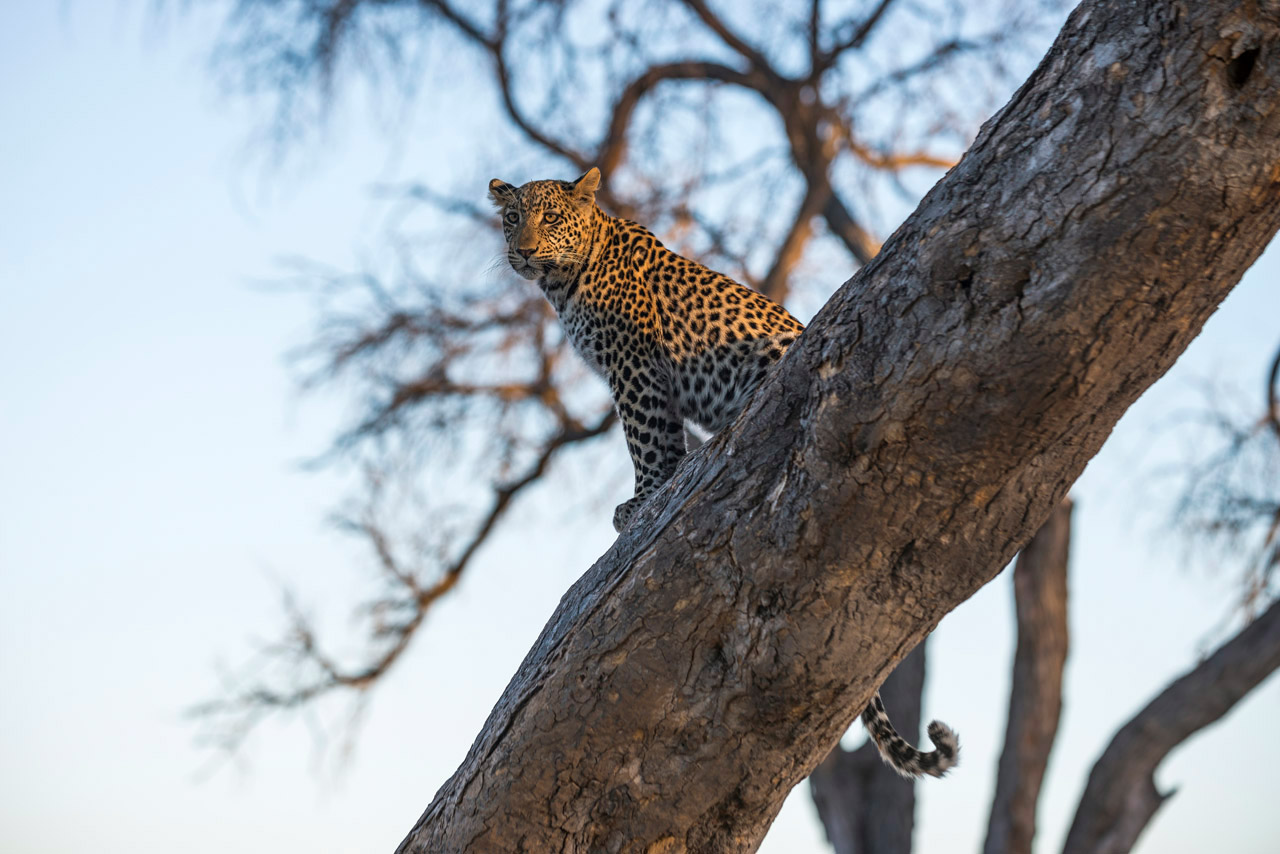
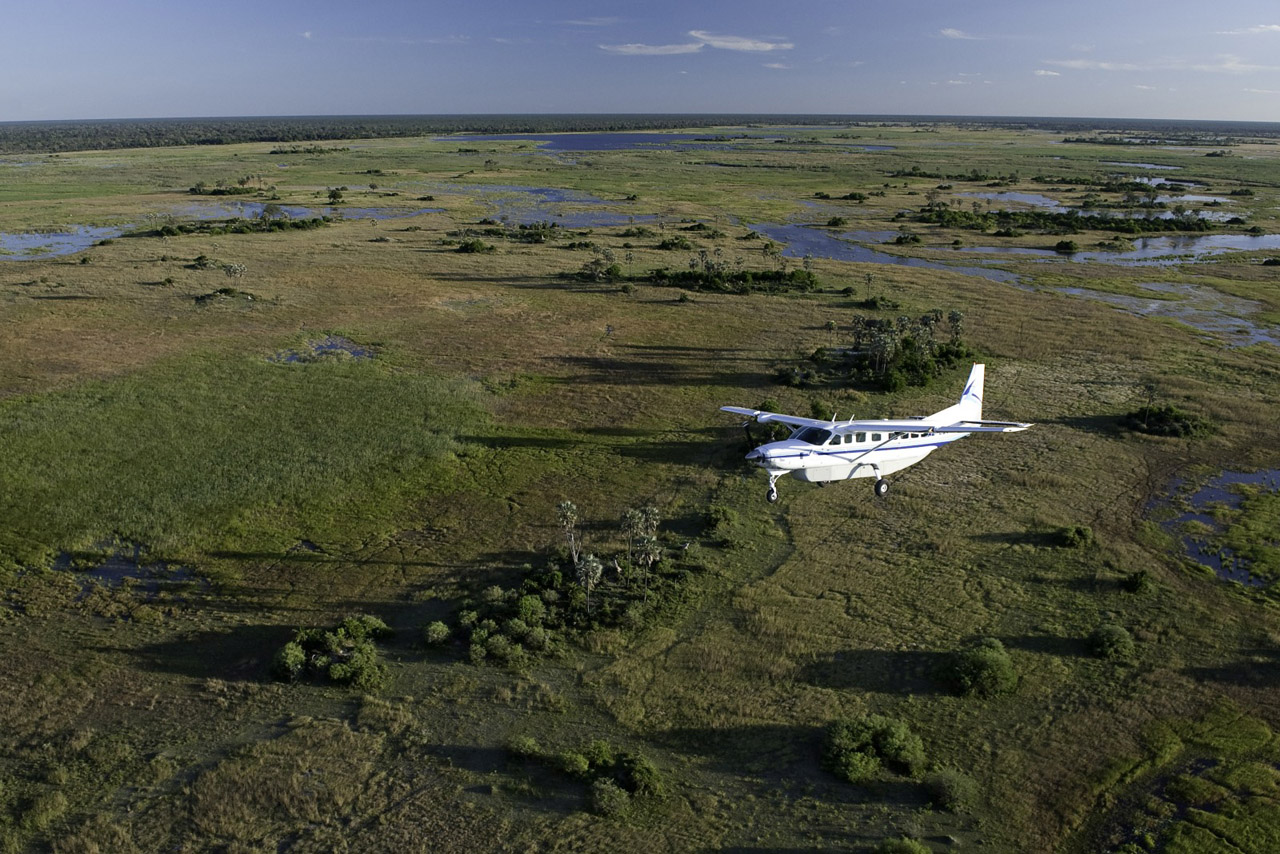

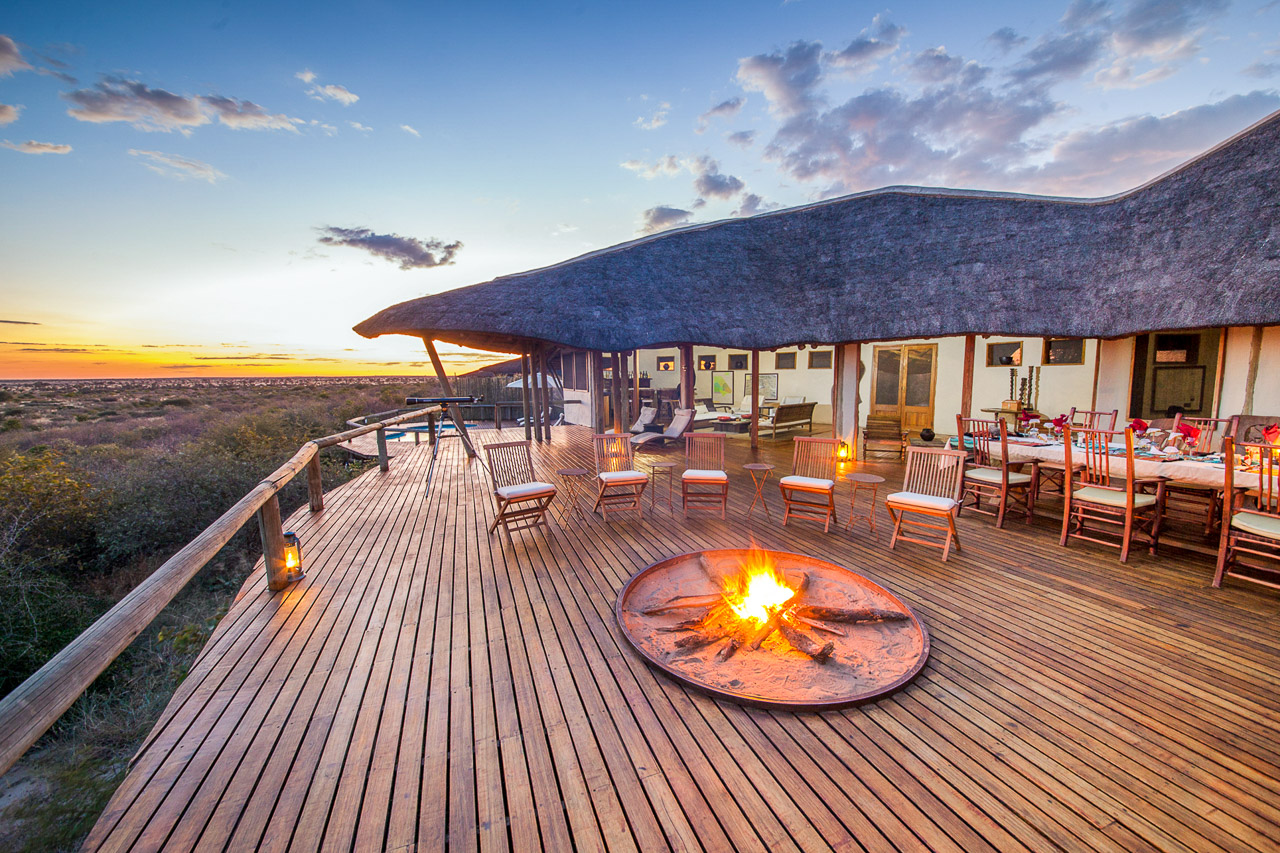
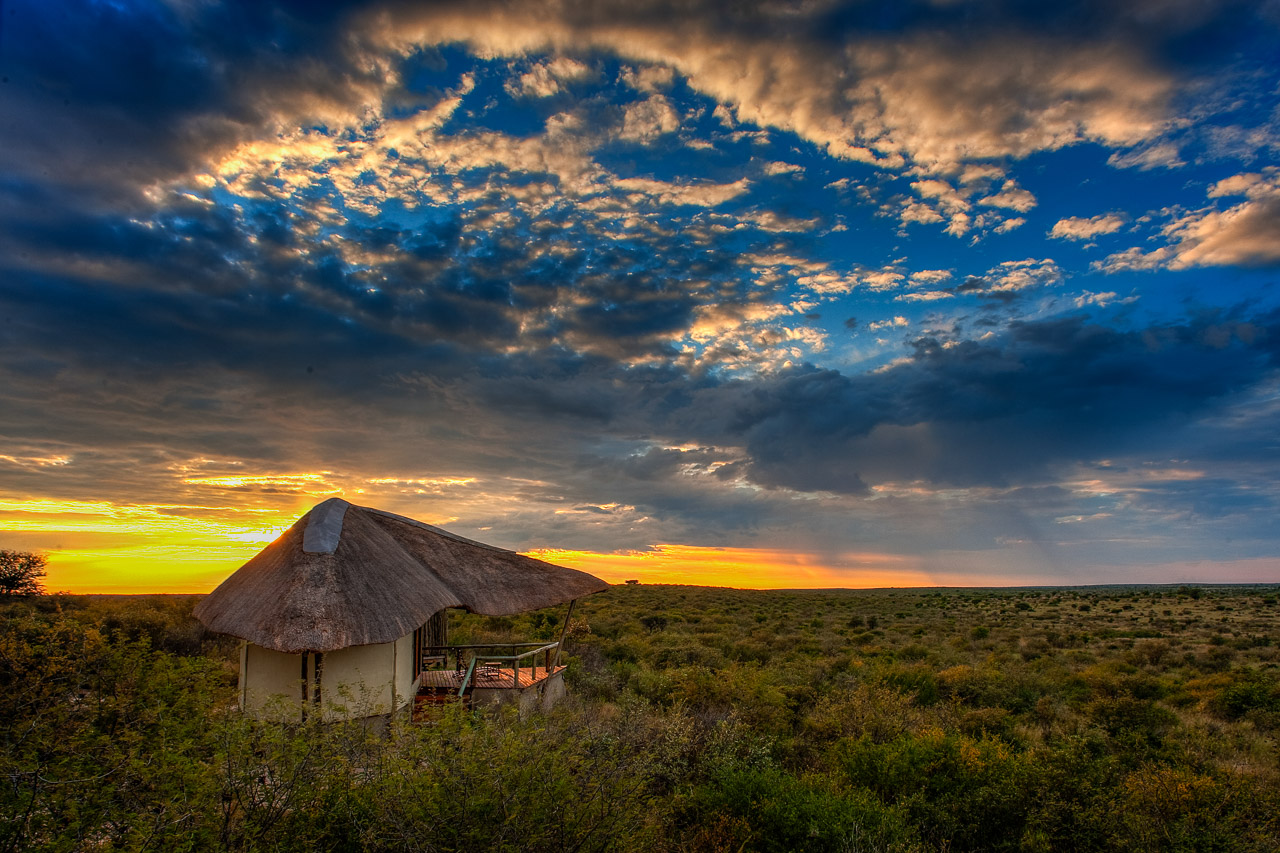
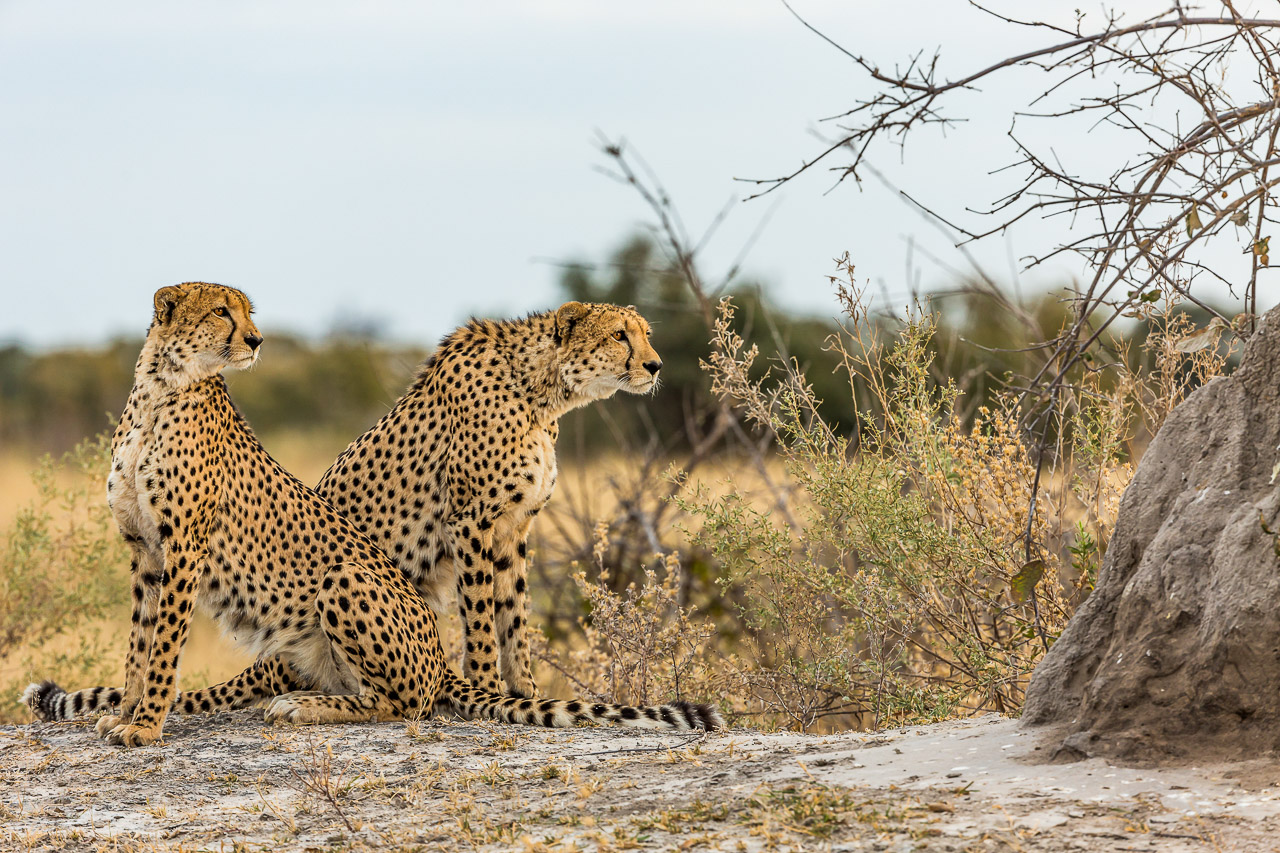
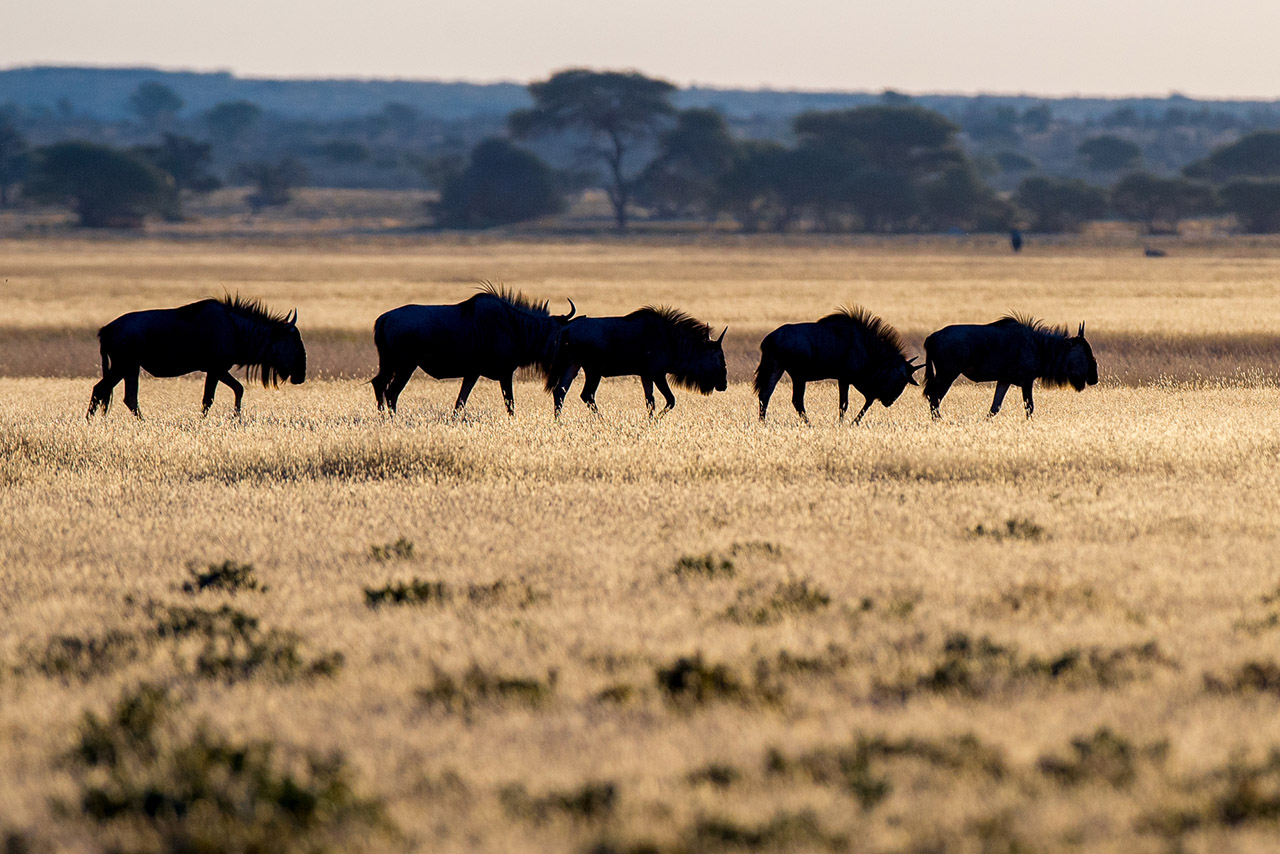
Accommodation
Tau Pan Camp is situated in one of the most beautiful places in the Kalahari and has a magnificent view over the plains of the Tau Pan. The nine rooms (one of which is a family room) are elevated on platforms and have a thatched roof that extends far towards the front and protects the terrace from rain and sunshine. All rooms have en-suite bathrooms with double lavabo, WC and an additional outdoor shower.
At the central main building there is a small library, a souvenir shop, a restaurant with a large outdoor terrace and, in a separate building, a plunge pool with sun loungers. At the eastern end of the camp, a sleep-out platform offers the guest the opportunity to spend the night under the stars. For stays of 3 nights or more, a sleep-out can be pre-booked free of charge. The nights in the Kalahari are often incredibly clear with minimal light pollution.
Tau Pan Camp is situated on a ridge on the edge of Tau Pan. The Tau Pan is a beautiful open grass plain in the middle of the Kalahari and a magnet for many animals, especially lions.
The flight from Maun to Tau Pan Airstrip takes about one hour. The drive from the airstrip to the camp takes about 15 minutes.
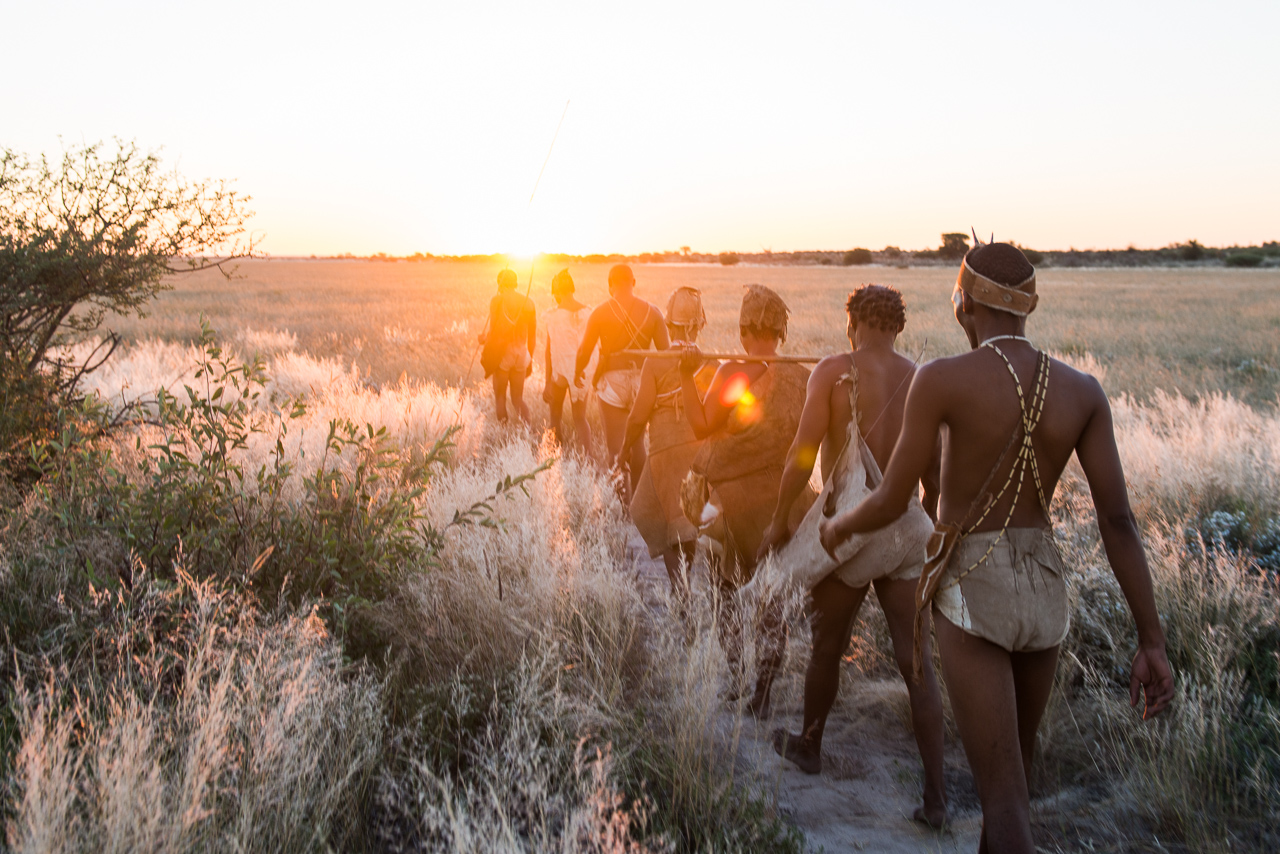
Covering more than one million km², the Kalahari Desert stretches from the South Africa/Namibia border (Kgalagadi Transfrontier Park) to Zambia/Angola, and encompasses the Okavango Delta. Unlike the Kgalagadi Sector, where red sand dunes dominate the landscape, the central part of the Kalahari comprises shrubs emerging from light coloured sand.
This seemingly endless expanse is home to several open ‘valleys’ and beautiful grassy plains. The most famous of these valleys is Deception Valley, and the best-known waterholes include Piper Pan, Tau Pan, Leopard Pan and Sunday Pan. Deception Valley and the pans attract a dense population of game during the wet season, mainly oryx and springbok, neither of which are to be found in the Okavango Delta. The greatest attraction here, however, is the black-maned Kalahari lion, which has learned to survive in this arid environment, and is able to go with out water for long periods of time. With a bit of luck, visitors may also spot cheetah, which has become much less common in other areas.
The best time to visit the Kalahari is from December to April. Every now and then a storm breaks over the Kalahari at the end of a scorching day, bringing with it long-awaited moisture to an otherwise parched region. Afterwards, the air is clean, the view clear, the stars in the night sky seem close enough to touch and the heavens hover like an immense blanket that gently covers everything.
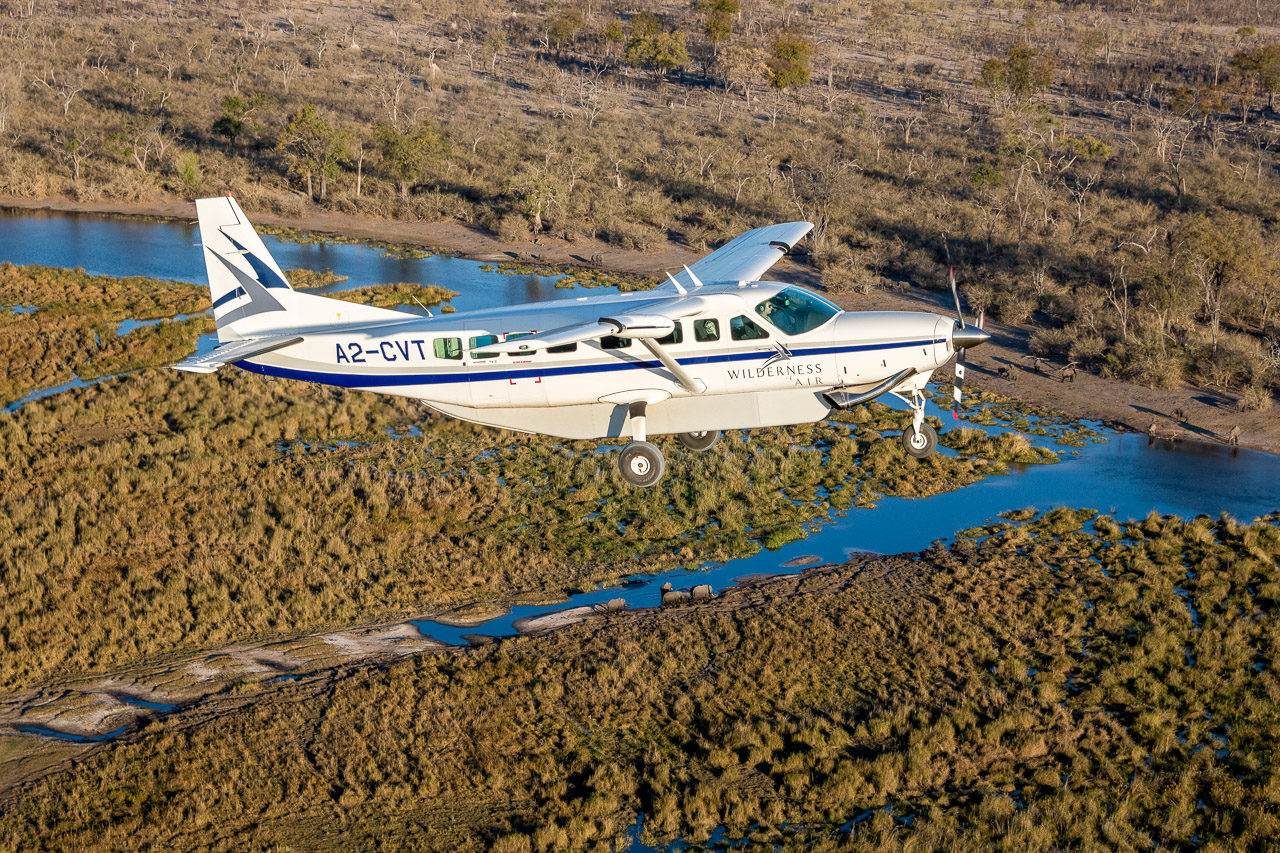

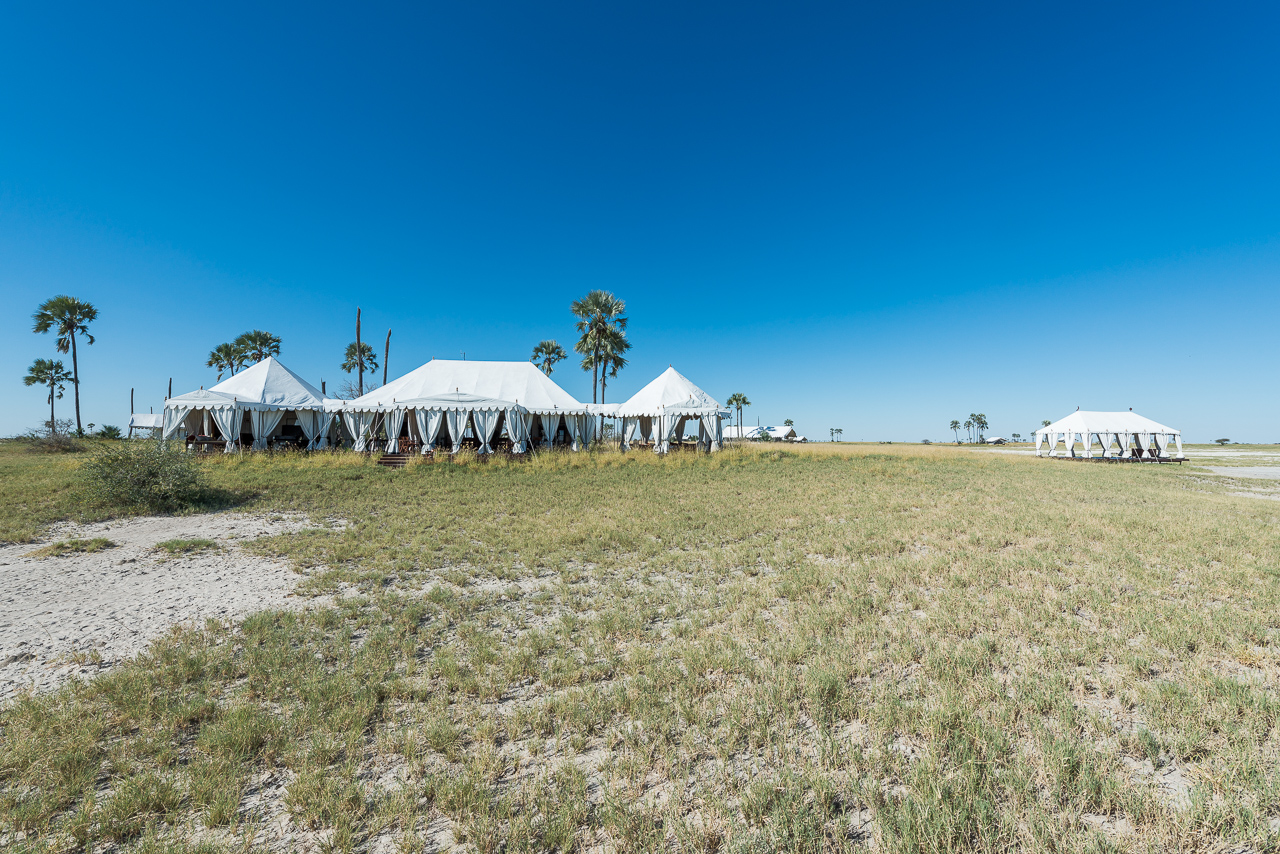

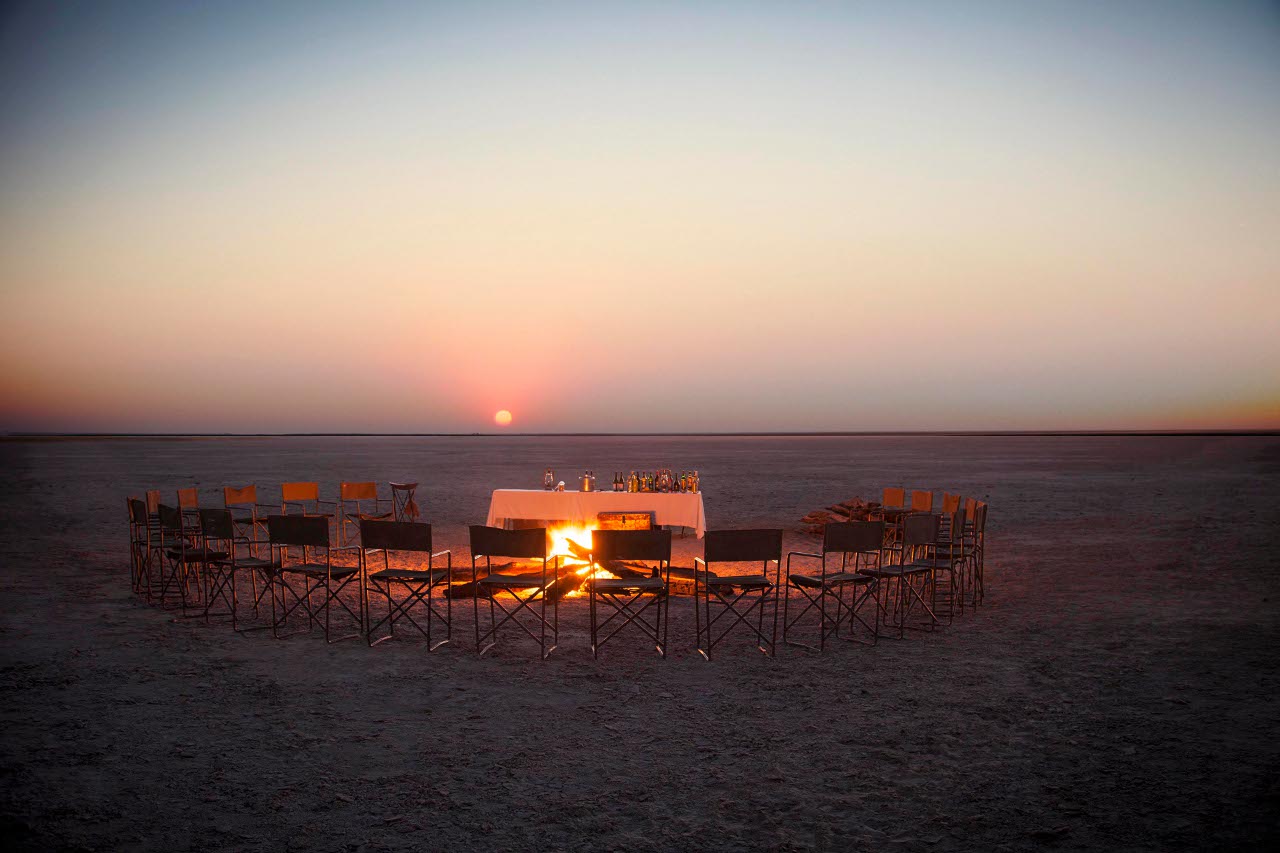
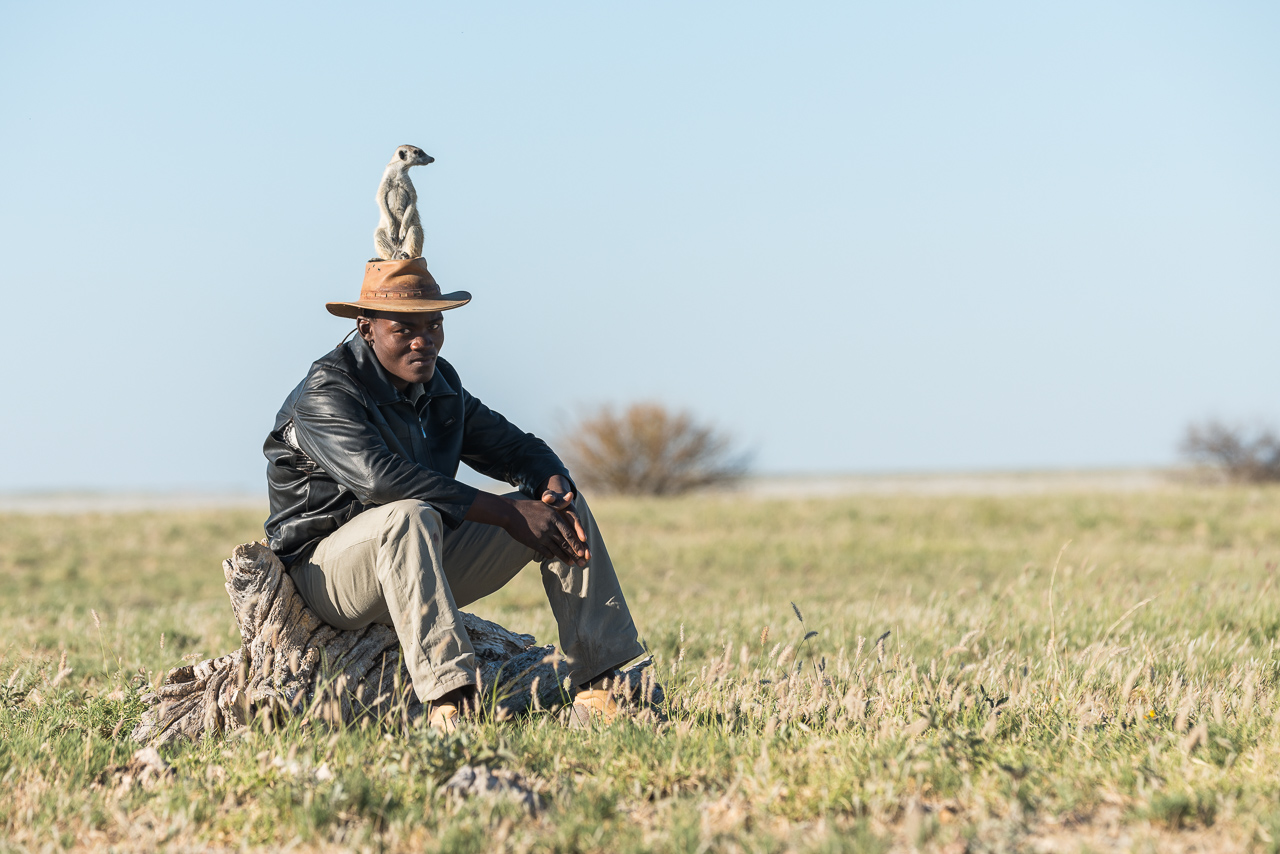
Accommodation San Camp combines an elegant and traditional safari style with minimal ecological impact (solar energy). A spectacular camp in a spectacular location with personal service and the only camp that offers truly fantastic views of the salt pans.
Seven classically styled white tents (4 twin, 2 double, 1 x family) with en-suite facilities sit at the edge of a salt pan on a grassy plain sprinkled with palm trees. The tents have a little verandah and are equipeed with sun loungers.
Three tents combine to form the main area, comprising a dining tent, library / lounge, and a yoga pavilion. Electricity is available in the main building only, not in the individual rooms.
San Camp is the only of the three Makgadikgadi Camps (San, Jack's, Camp Kalahari), with views of the salt pans.
San Camp is situated in a private concession bordering the Makgadikgadi National Park. You may also like neighbouring sister camps Jack's Camp and Camp Kalahari
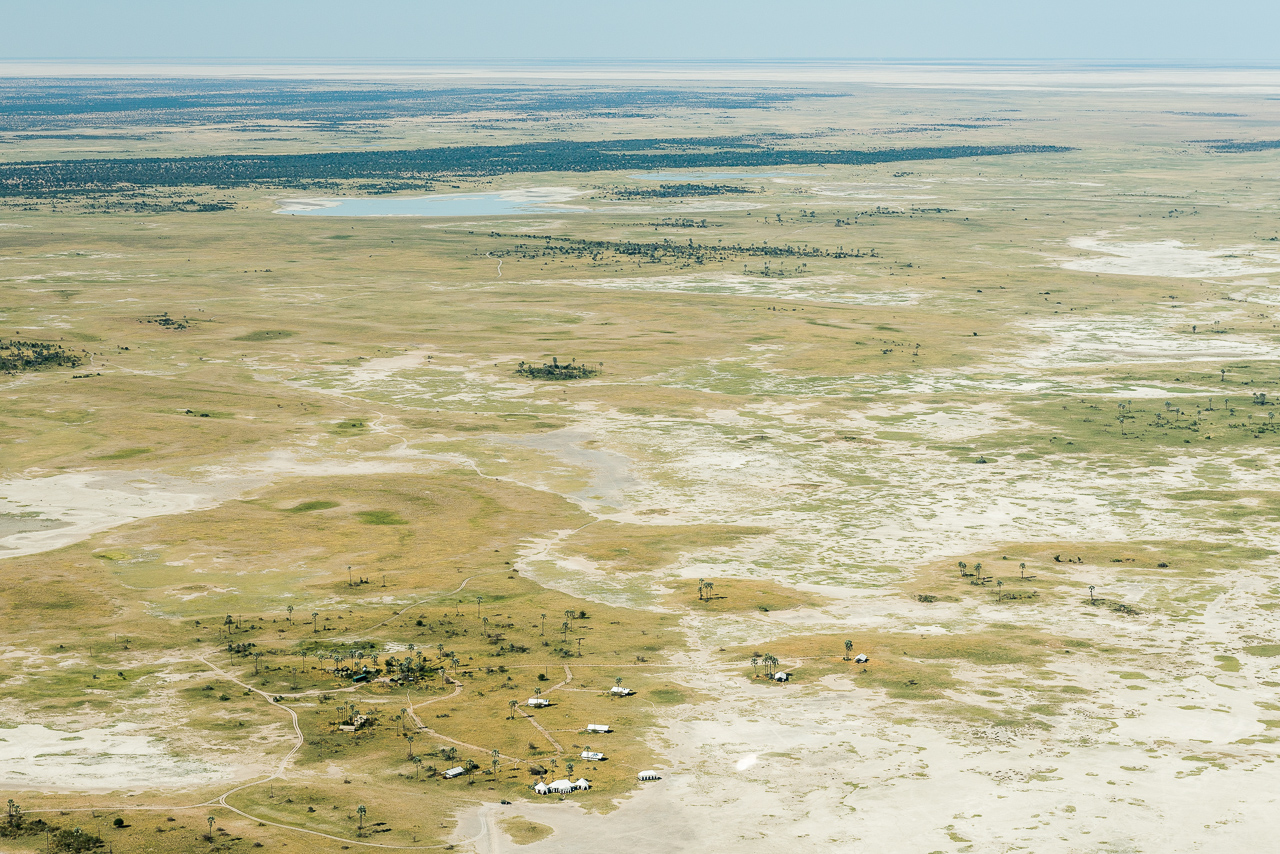
The Makgadikgadi Pans are dried up salt-water lakes, which formed part of an immense ancient inland sea that also encompassed the Okavango Delta and the Central Kalahari. Located on the edge of the salt plains are several camps that offer activities on the pans, and introduce visitors to the life of the local San people.
The pans can only be accessed during the dry season. The camps only use quads with broad tyres as they cause the least amount of damage. You can also choose to sleep under the stars during multi-day tours that take you to Kubu Island and back during the dry season.
There is not much wildlife here during the dry season, but the area is on a migration route taken by zebra and wildebeest, which leads from the Nxai Pans, through the Makgadikgadi and on to the Boteti River. The animals migrate south from the Nxai Pans to the Boteti River at the start of the dry season. They remain here until the beginning of the wet season, when they return to the Nxai Pans and give birth to their young. The Nxai Pans stretch out northwards from the Makgadikgadi Pans on the other side of the Maun-Nata road. This is also the home of the historic Baines Baobab, which has survived in this barren landscape for thousands of years.
If you would like to drive on the salt pans, then you must visit during the dry season. If you would like to experience the migration of zebra and wildebeest, then it is best to visit during the wet season. The pans fill with water during the wet season, making them the perfect breeding ground for thousands of flamingos and pelicans.
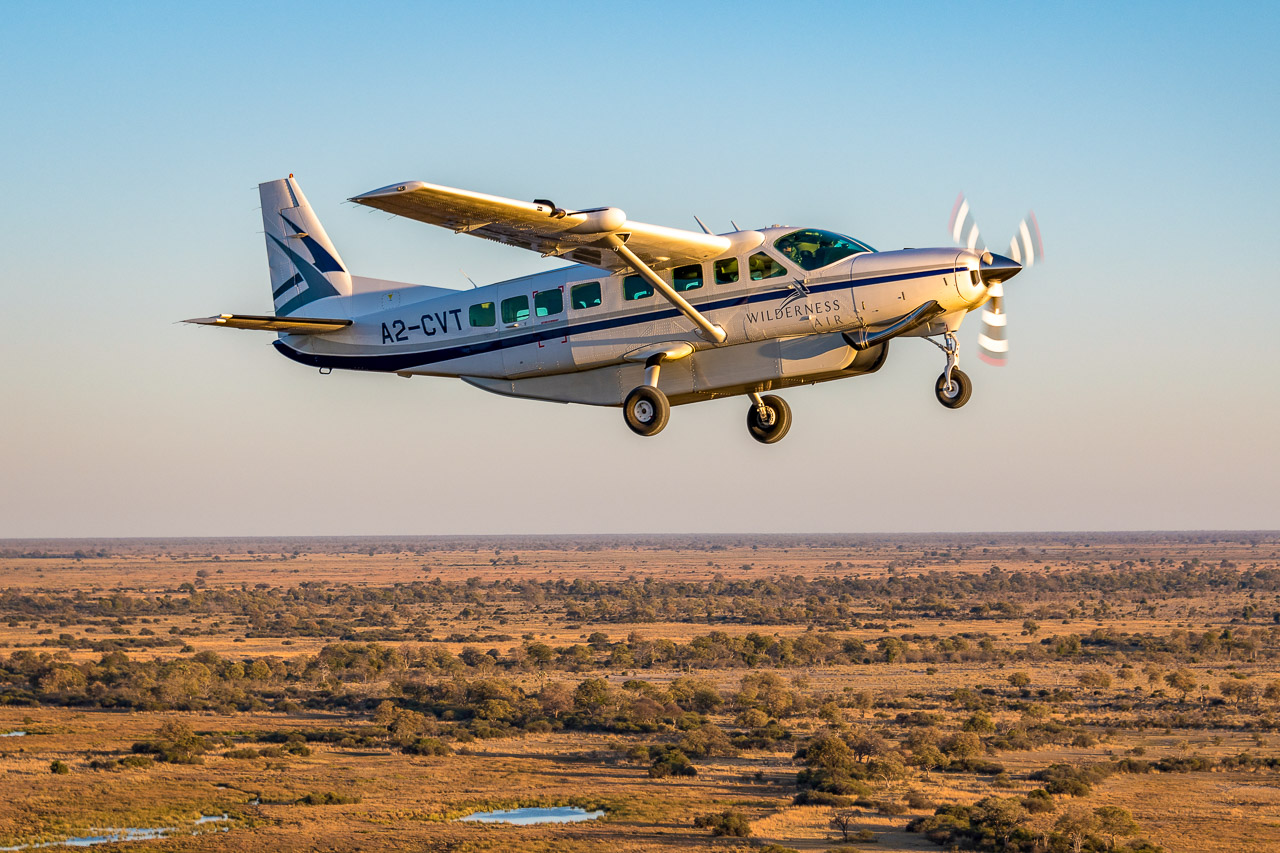

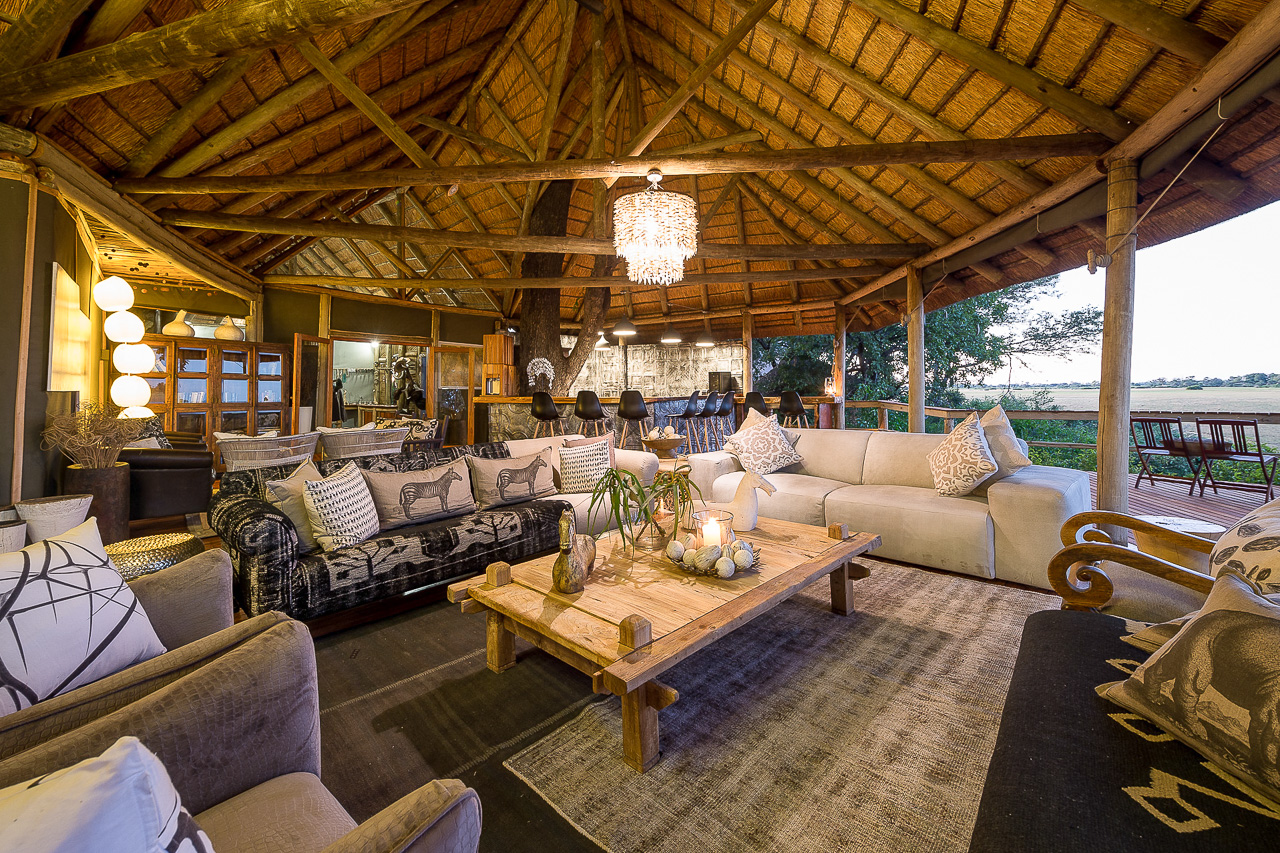
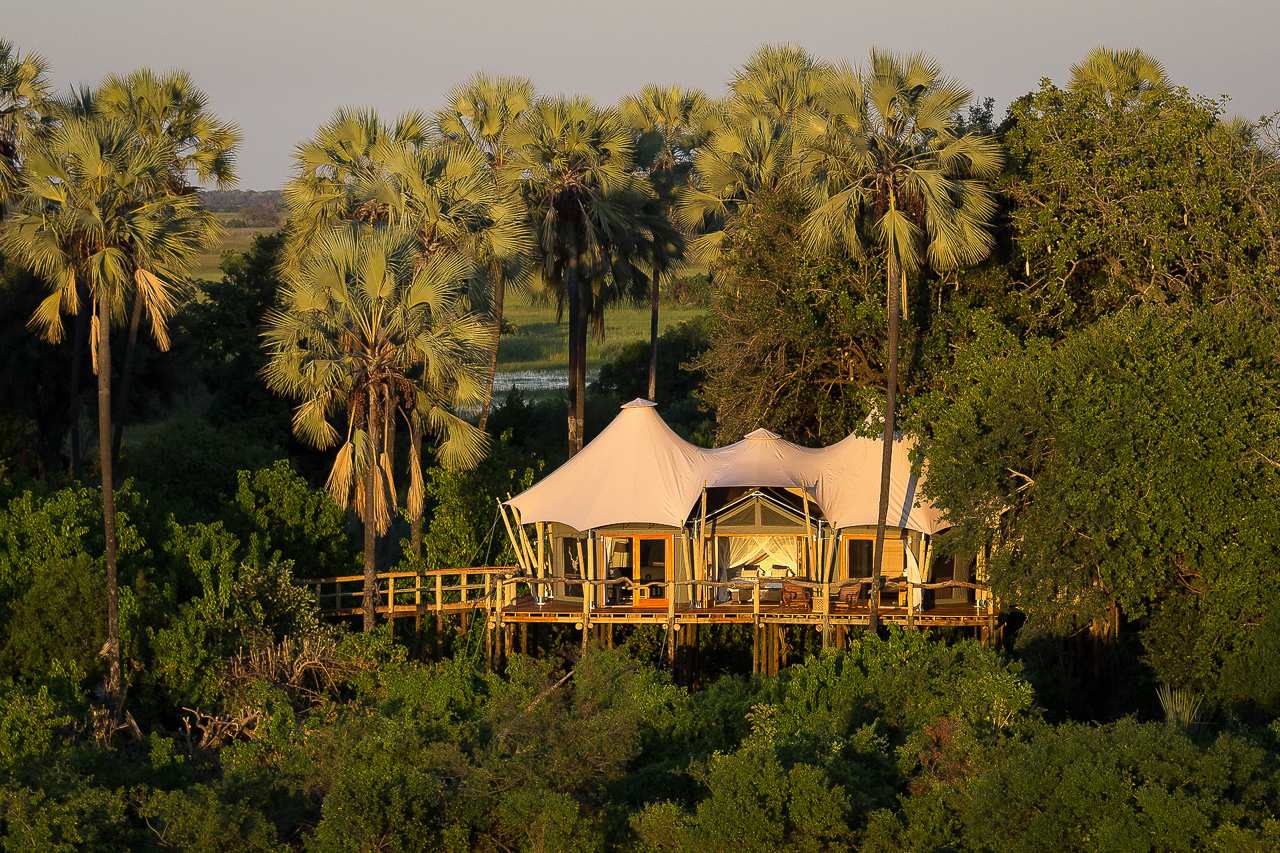
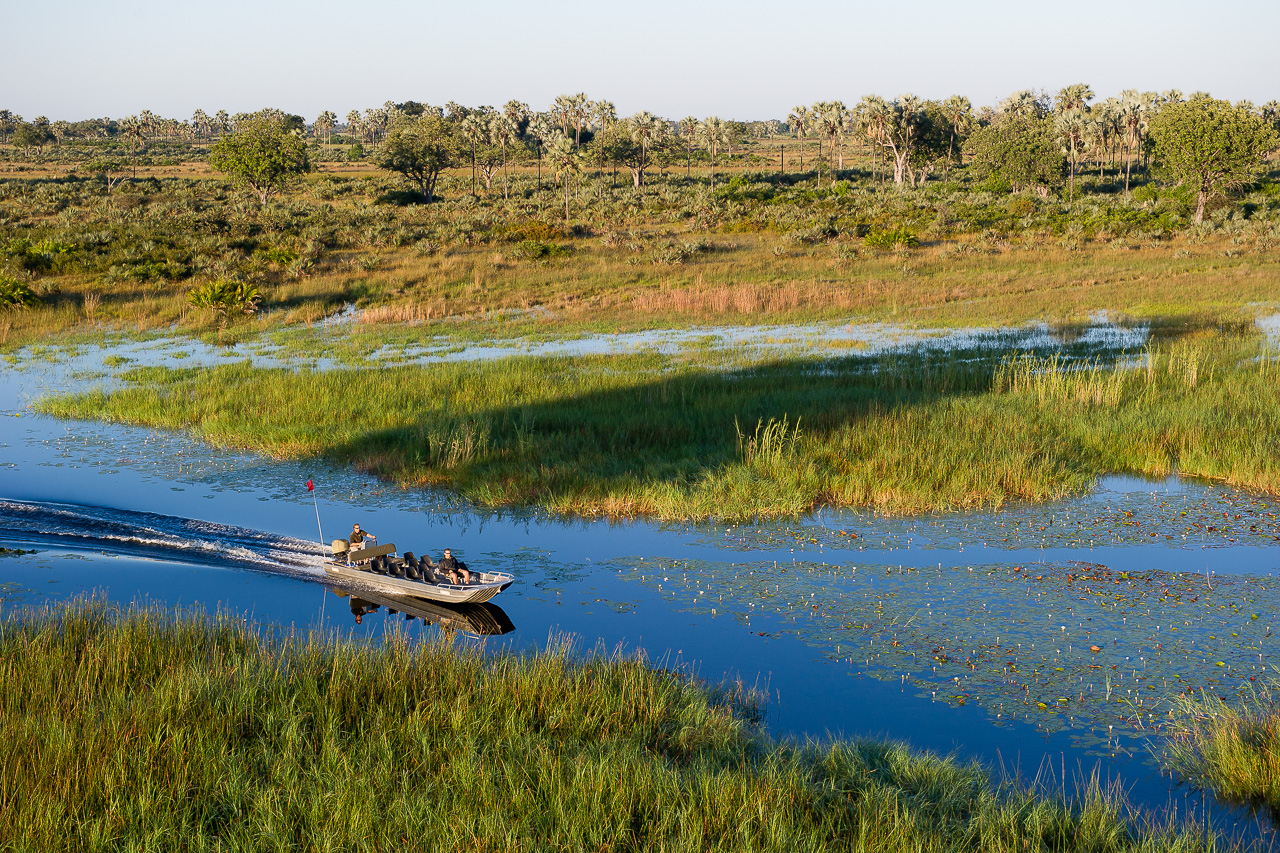
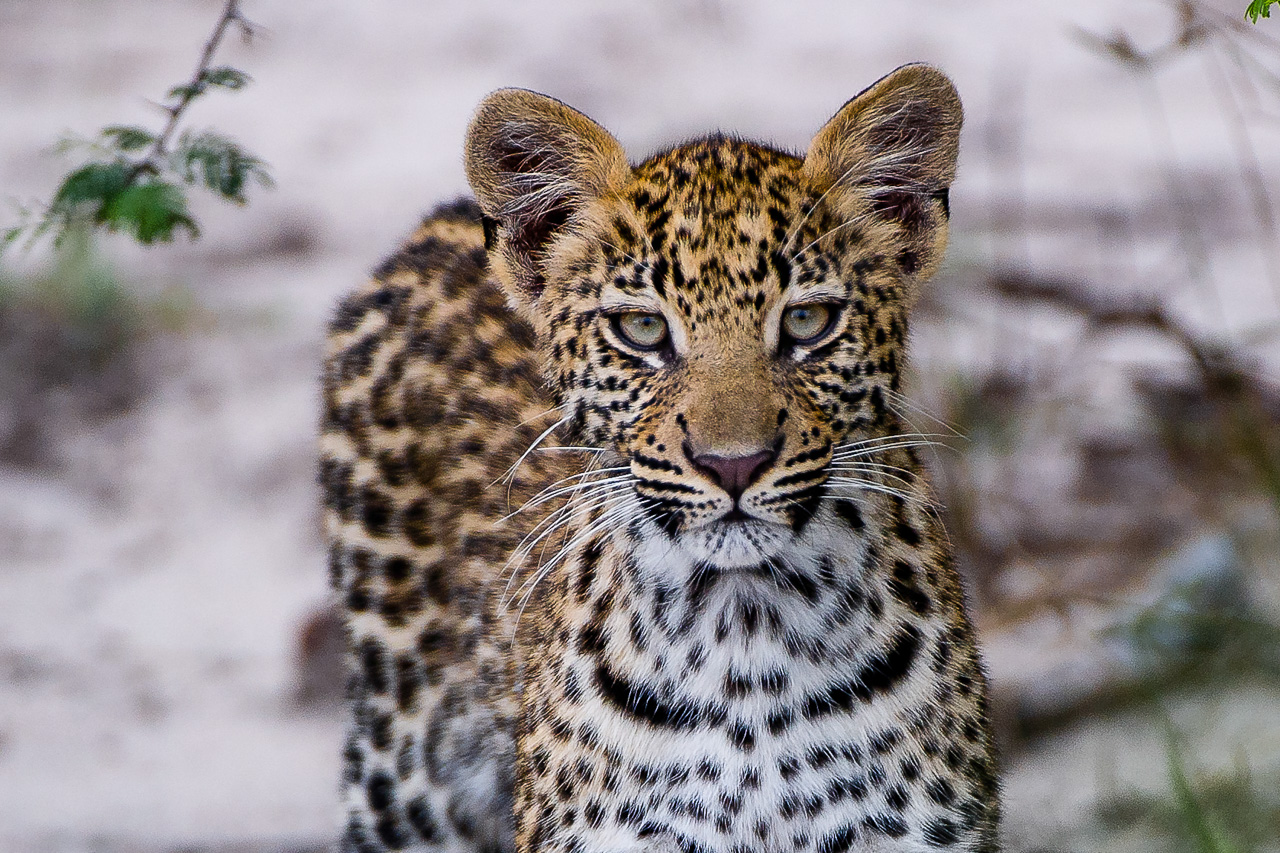
Accommodation Kwetsani is reminiscent of a large tree house. Its six comfortable rooms are each equipped with en-suite facilities, indoor and outdoor shower, and beautiful veranda built on the highest stilts in Botswana, offering spectacular views of the floodplain to the front of the camp.
The main building consists of a large, open room with bar, lounge and long dining table. A substantial deck stretches out from the main building and a wooden walkway leads from here to the pool.
Kwetsani Camp is only accessible by light aircraft. Jao Airstrip is located approximately 60 minutes from the camp. If water levels are high, arriving guests are transferred directly from Jao Airstrip to Kwetsani by boat. A great introduction to the world of the Okavango Delta!
Flight time to Maun in a Cessna Caravan is 40 minutes, and 1 hour 25 minutes to Kasane.
Kwetsani Camp is part of the private Jao Concession (630 km²). Pelo Camp, Tubu Tree Camp, Jacana Camp and the premier Jao Camp all belong to this concession.
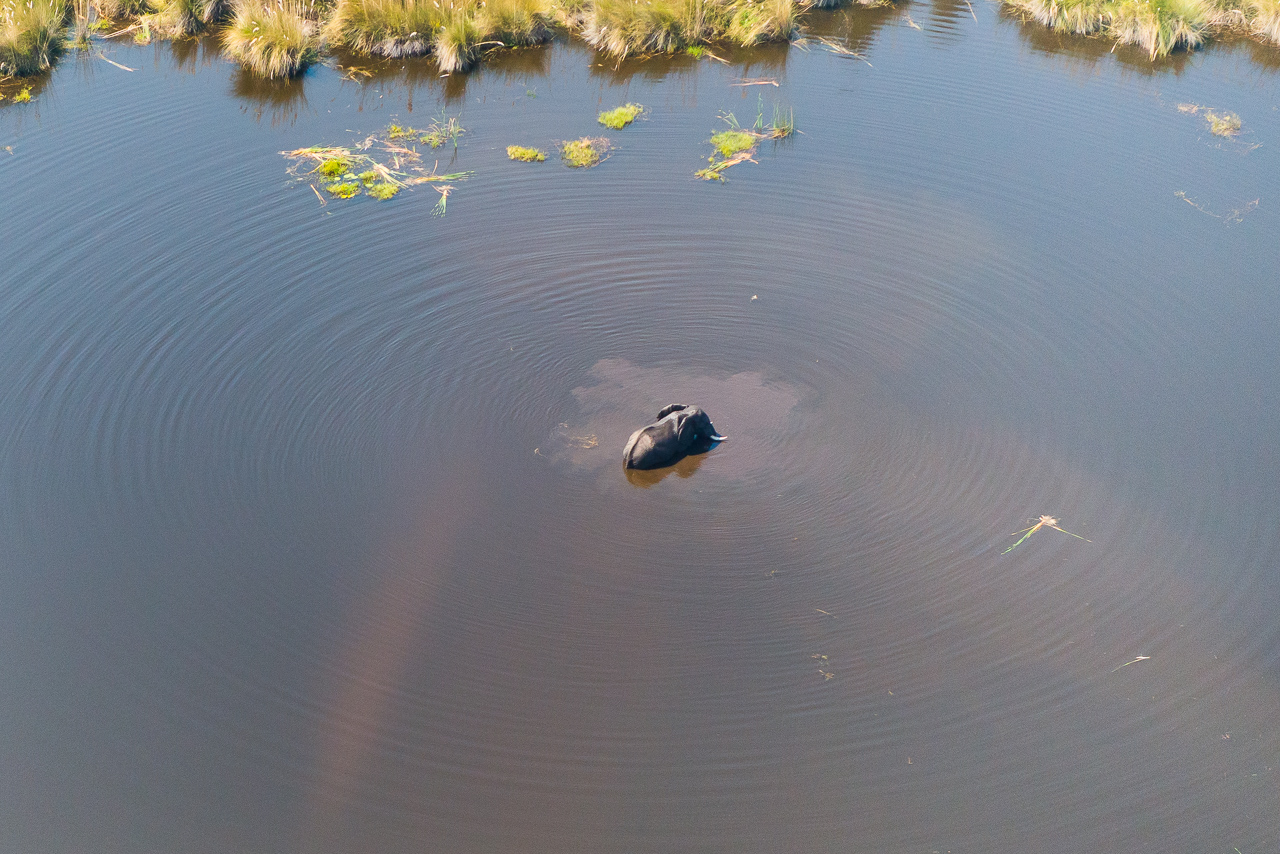
Guests can look forward to first-class service at exclusive and stunning lodges set amid pristine wilderness. The Okavango Delta is an inland delta in the north of Botswana, which can be accessed via Maun or Kasane. Some areas on the edge of the delta are accessible by vehicle, but the vast majority of lodges here are located deep in the delta, which means they are only accessible by air and therefore highly exclusive.
The Okavango Delta plays host to a fascinating cycle of rain, flood, drought, heat and cold. These processes determine the behaviour of the animals and their migration paths. The onset of rain in November / December leads to the appearance of spectacular green meadows as dormant flora springs back to life, trees sprout new leaves and colours become vivid and saturated. The vast majority of animals give birth to their young at the beginning of the wet season, which means the whole area is teeming with baby elephant, impala and kudu – big cat often gives birth to its young at this time too.
The sporadic rains continue until the end of March. Temperatures slowly drop and a feeling of spring sets in around April. The nights become cooler and dew settles on the grass, causing it to sparkling in the sun’s first rays of light when guests can be found pulling up their hoods in preparation for the early morning game drives. The floodwaters reach the delta in April, sometimes earlier, and, covering immense areas, expand outward like a living, breathing organism. The floodwater is basically rainwater from the mountains of Angola, which slowly accumulates in the Okavango River over a period of several months. It squeezes through the panhandle, which is where the Okavango Delta fans out, and then floods the entire region. The well-equipped game drive vehicles struggle through metre-deep water from one island to the next, leaving passengers awestruck and wondering how the journey is at all possible.
The coolest temperatures are measured in June / July, when night time lows can drop as far as 5°C, and welcome hot water bottles are duly distributed! Well-wrapped guests come prepared for the early morning game drives with hats, gloves and warm jackets. Daytime temperatures are pleasant and the skies are clear with bright sunshine – every day! The sun’s heat dominates once again as September approaches, the alluvial areas begin to dry out and the short, dry grass offers a clear and welcome view of the entire spectrum of wildlife here. Temperatures climb to their maximum in October as the whole parched region once again anticipates the coming rains. When huge clouds begin to gather on the horizon, you know it’s only a matter of time until the whole cycle begins again.
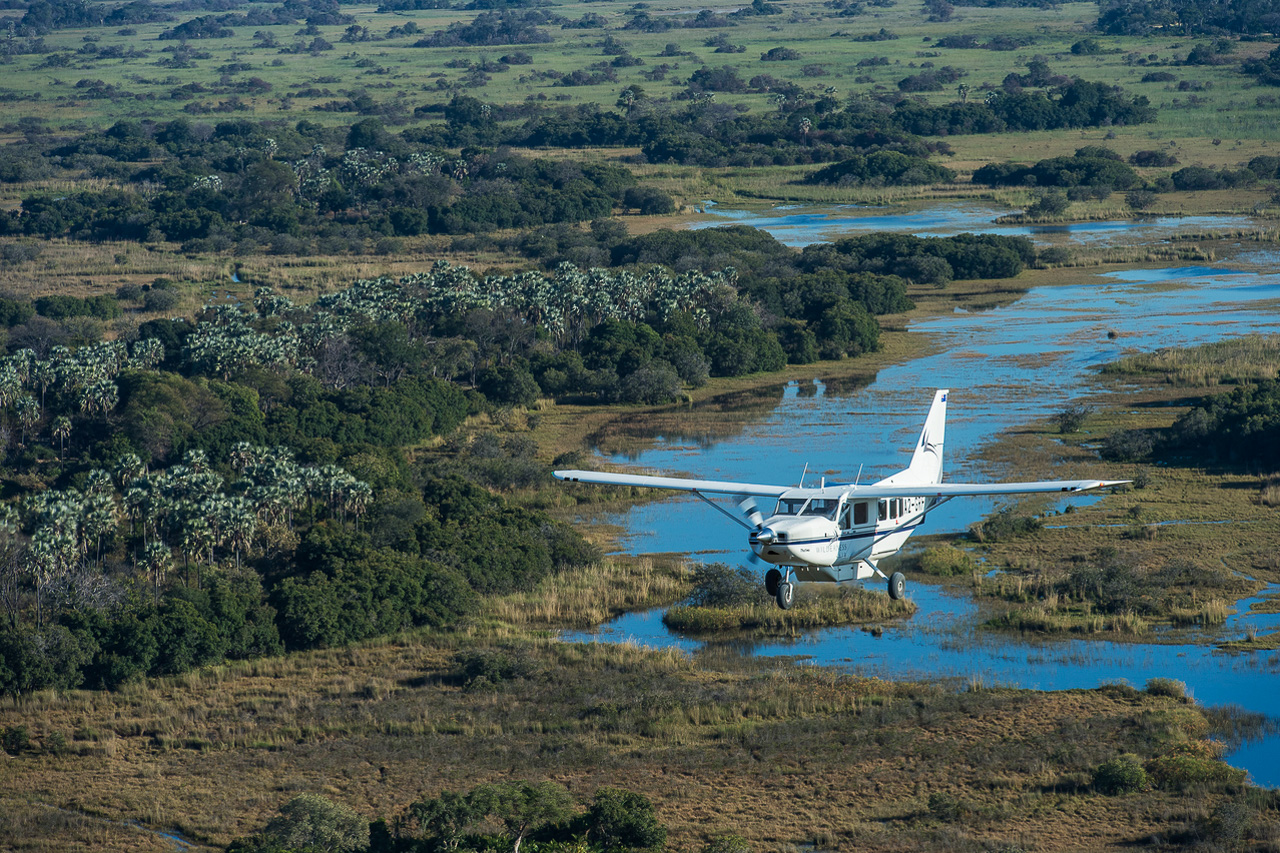

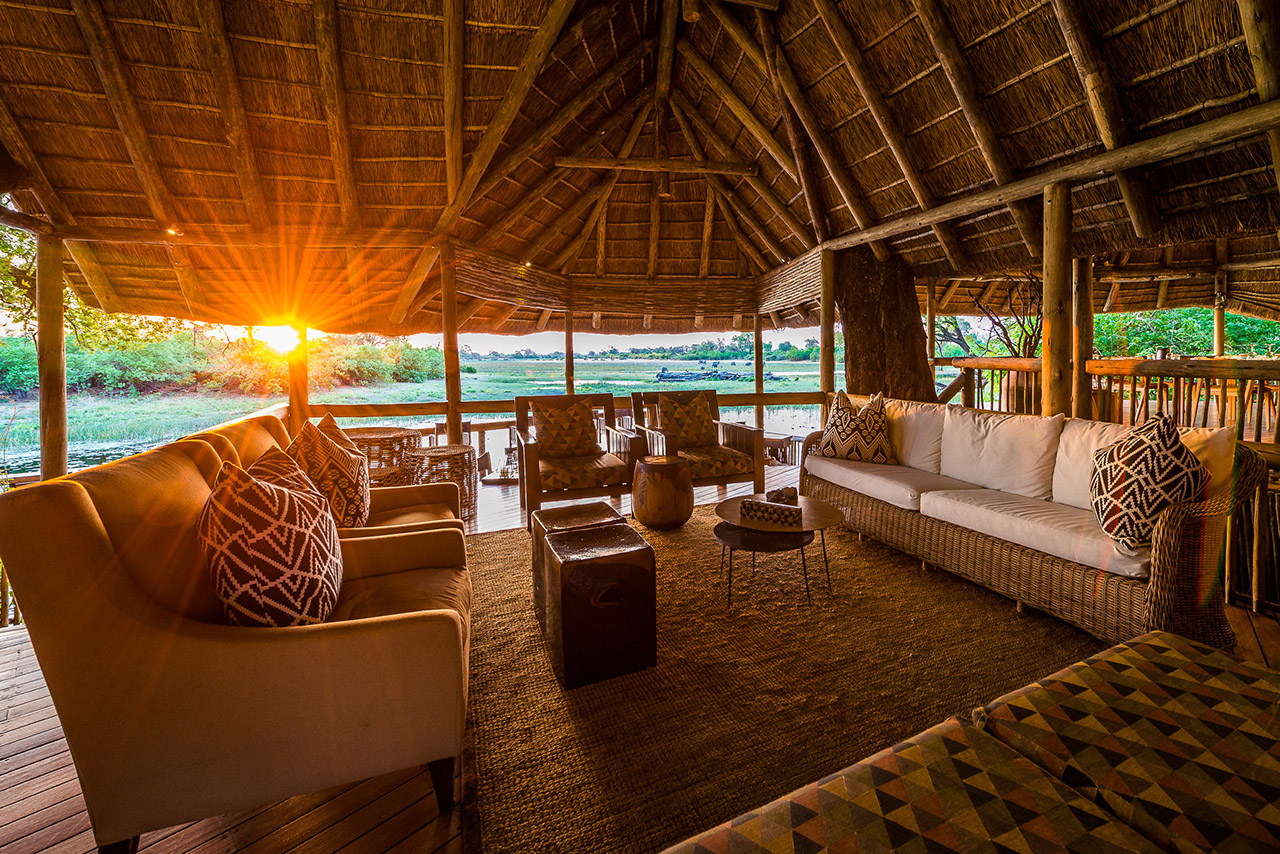
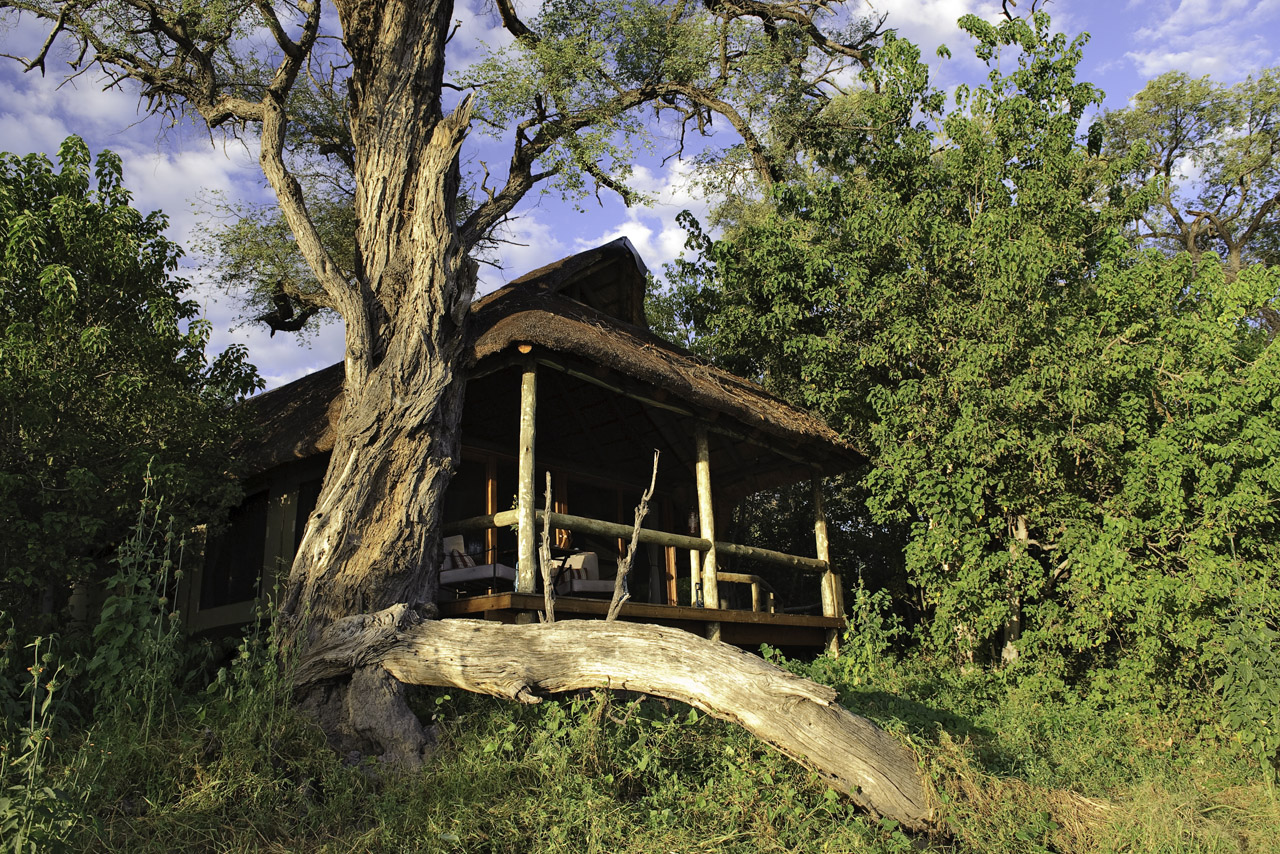
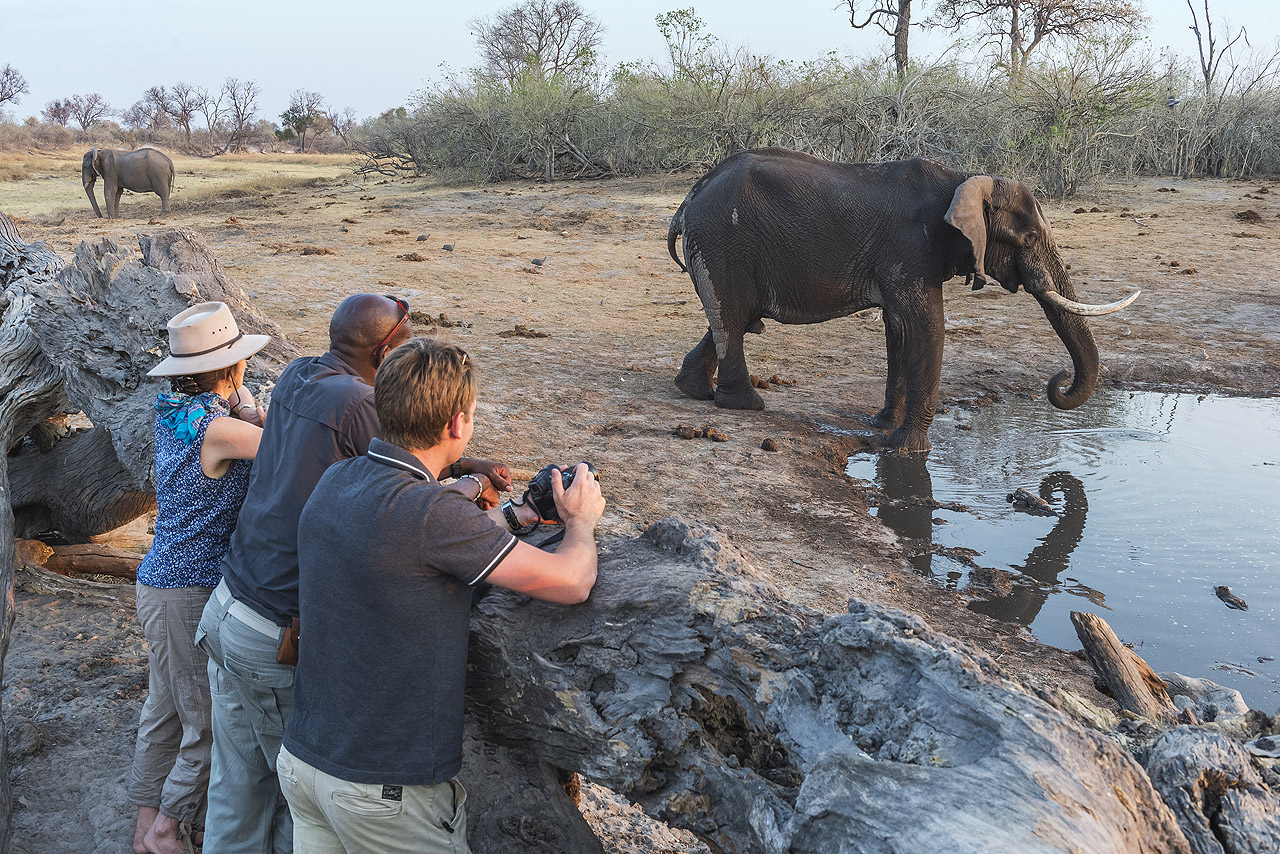
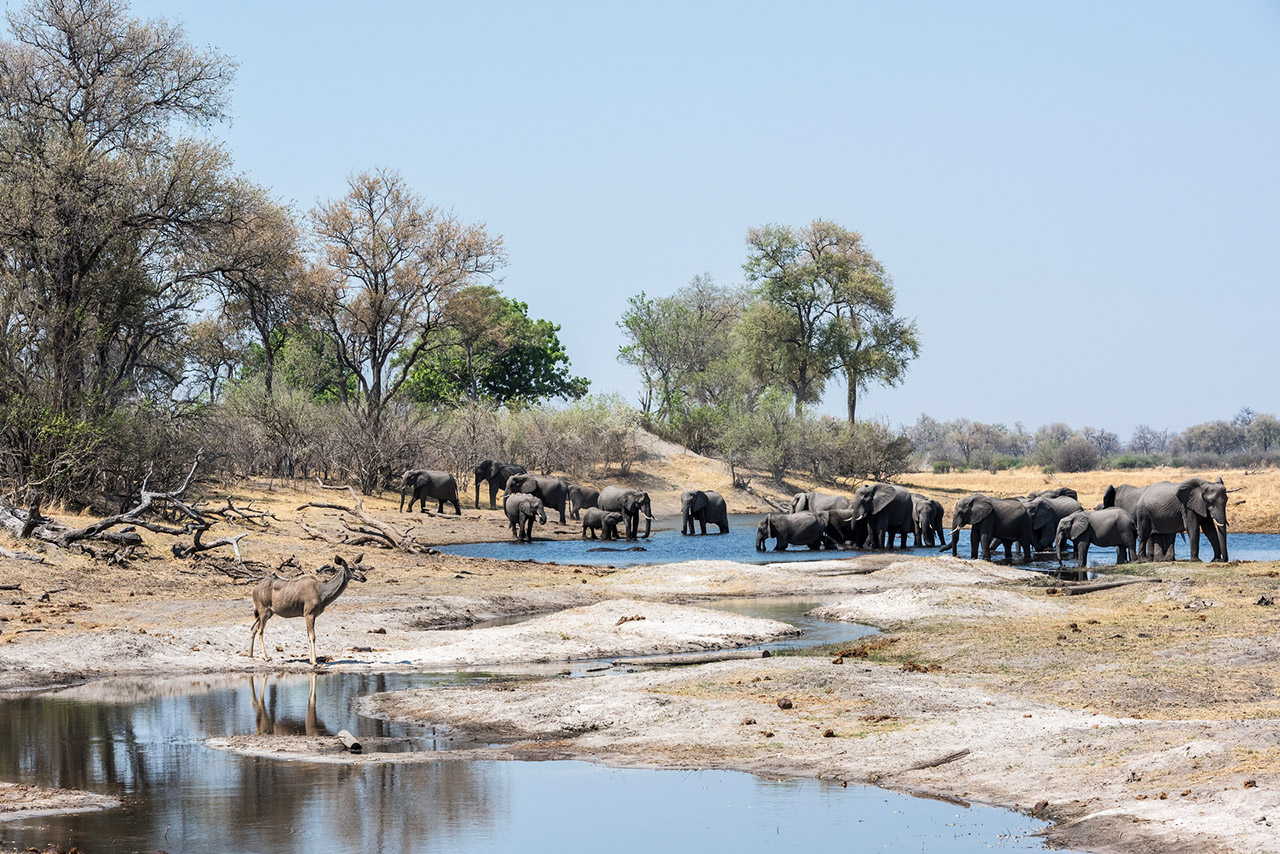
Accommodation Suvati Camp's seven large tents are slightly raised on platforms built along the Savuti Channel. All rooms are equipped with a very spacious en-suite bathroom.
The rooms are connected to the main building by wooden walkways. The deck of the main building stretches out into the Savuti Channel, and the spectacular views over most of the channel makes it a popular meeting place.
The Savuti Canal carries water in some years, in other years it remains dry. This depends on the flood water, which usually reaches the Okavango Delta in April and varies from year to year.
Savuti Camp is only accessible by light aircraft. The camp is located 35 minutes drive from Chobe 1 Airstrip. Flight time to Maun in a Cessna Caravan is 50 minutes, and 45 minutes to Kasane.
Savuti Camp is part of the private Linyanti Concession (1,200 km²). Duma Tau Camp, Savuti Camp and the premier Kings Pool Camp all belong to this concession.
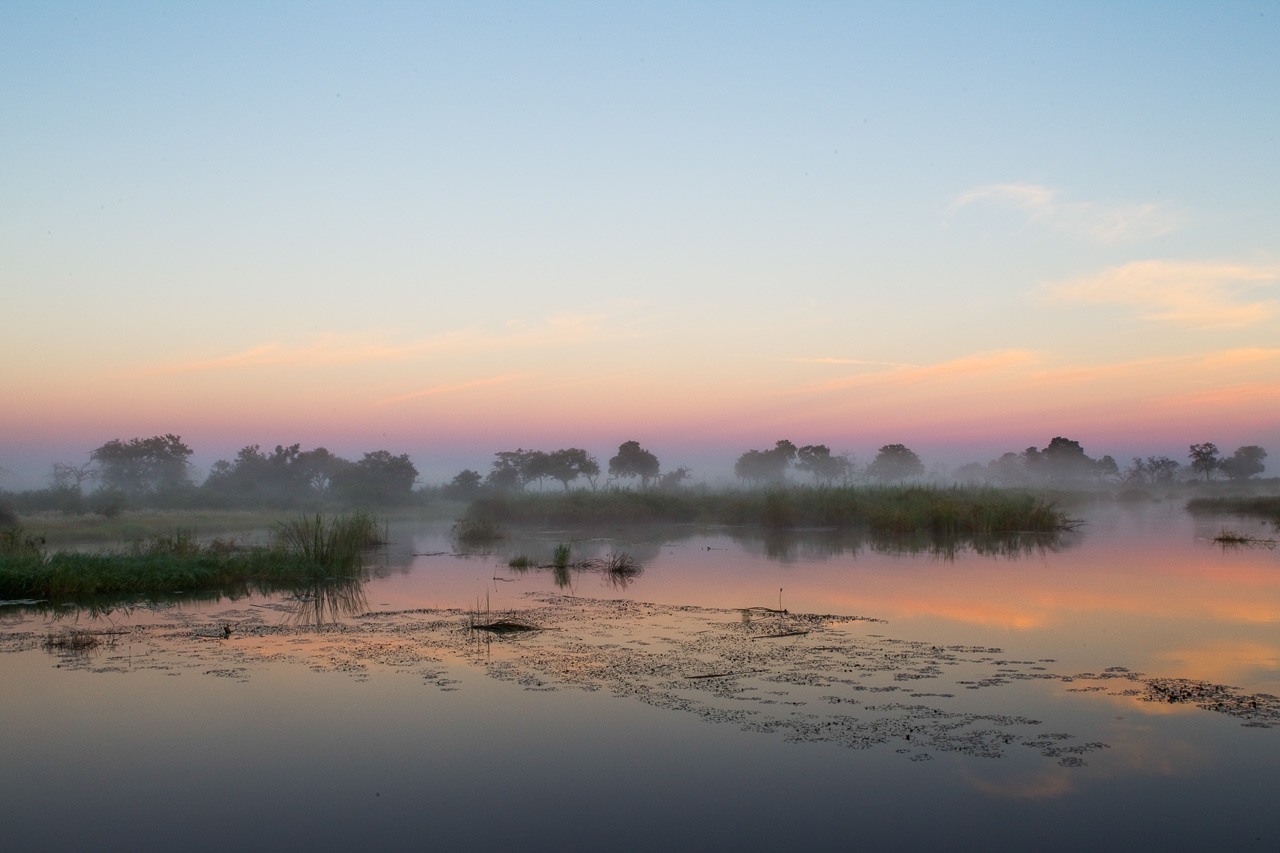
As in the Okavango Delta, we only book stunning, highly exclusive lodges situated in unspoiled nature that are often only accessible by air. The Linyanti region can be divided into four distinct areas, namely the Kwando Concession of Kwando Safaris, the Selinda Plains of Great Plains, the actual Linyanti Block of Wilderness and the Chobe Enclave, where African Bush Camps operate some of their camps.
The Linyanti region allows you to see clearly the influence of tectonic activity in the area. It is believed that the Okavango, Kwando and Zambezi rivers originally flooded much of Botswana, including the Makgadikgadi Pans. Today, the Kwando River flows through the Caprivi Strip in Namibia and heads south towards Botswana. The water hits a slight elevation, which dams the river and forms the Linyanti Wetlands. Here it takes a sharp turn to the east before continuing its journey as the Linyanti River. It then becomes the Chobe River at Kasane before finally flowing into the great Zambezi. The Linyanti Wetlands connect to the Okavango Delta via the Selinda Spillway, a kind of overflow system of the Okavango Delta. Water has been flowing here again during the winter months for several years now, making it the ideal location for canoeing safaris. The Okavango Delta’s increased water level has also returned water to the Zibadianja Lagoon – its outlet, the Savuti Canal, now has sometimes water running along its entire length, feeding the Savuti Marsh!
Although the area has seen dramatic changes in recent years, the Linyanti River still attracts a large number of elephant and buffalo from the Chobe Forests during the dry season, and is therefore still the perfect place to experience memorable game drives.
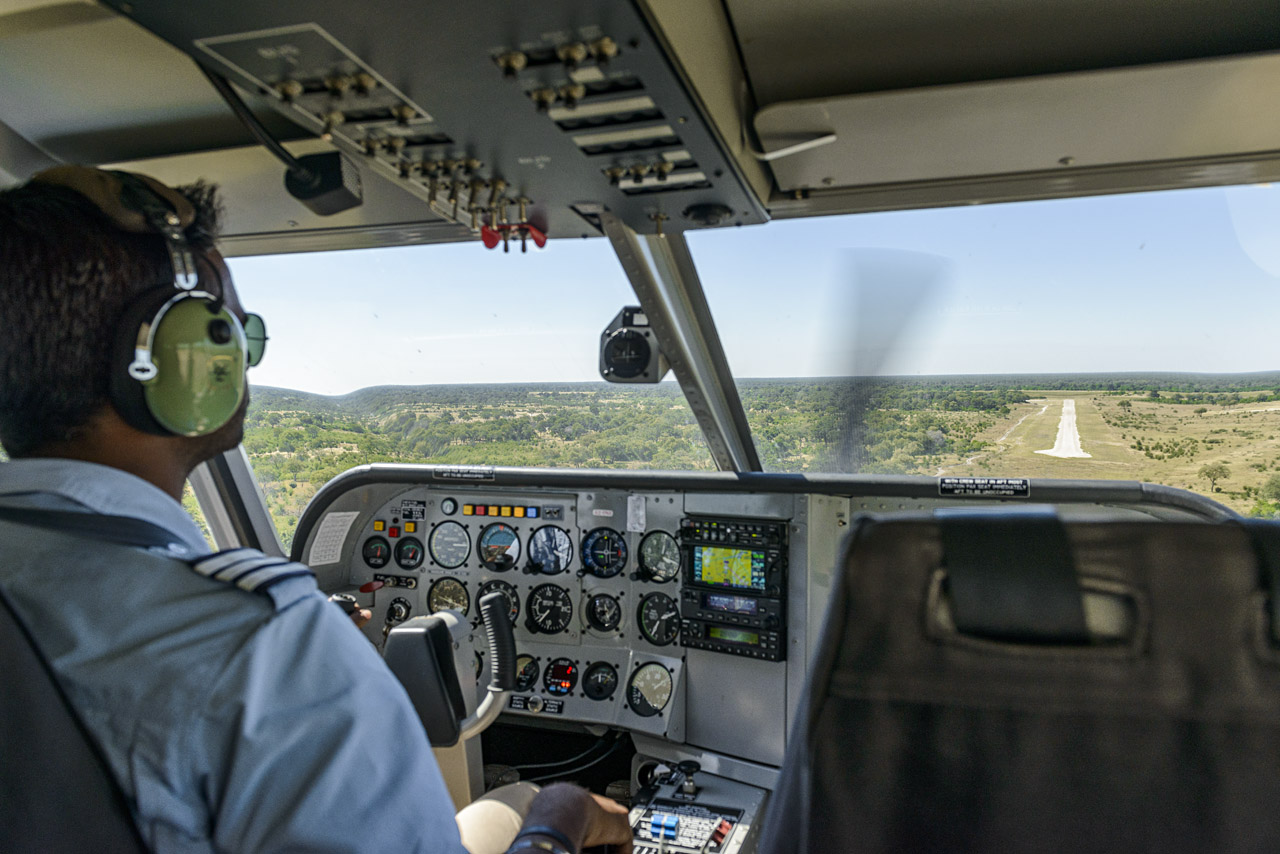
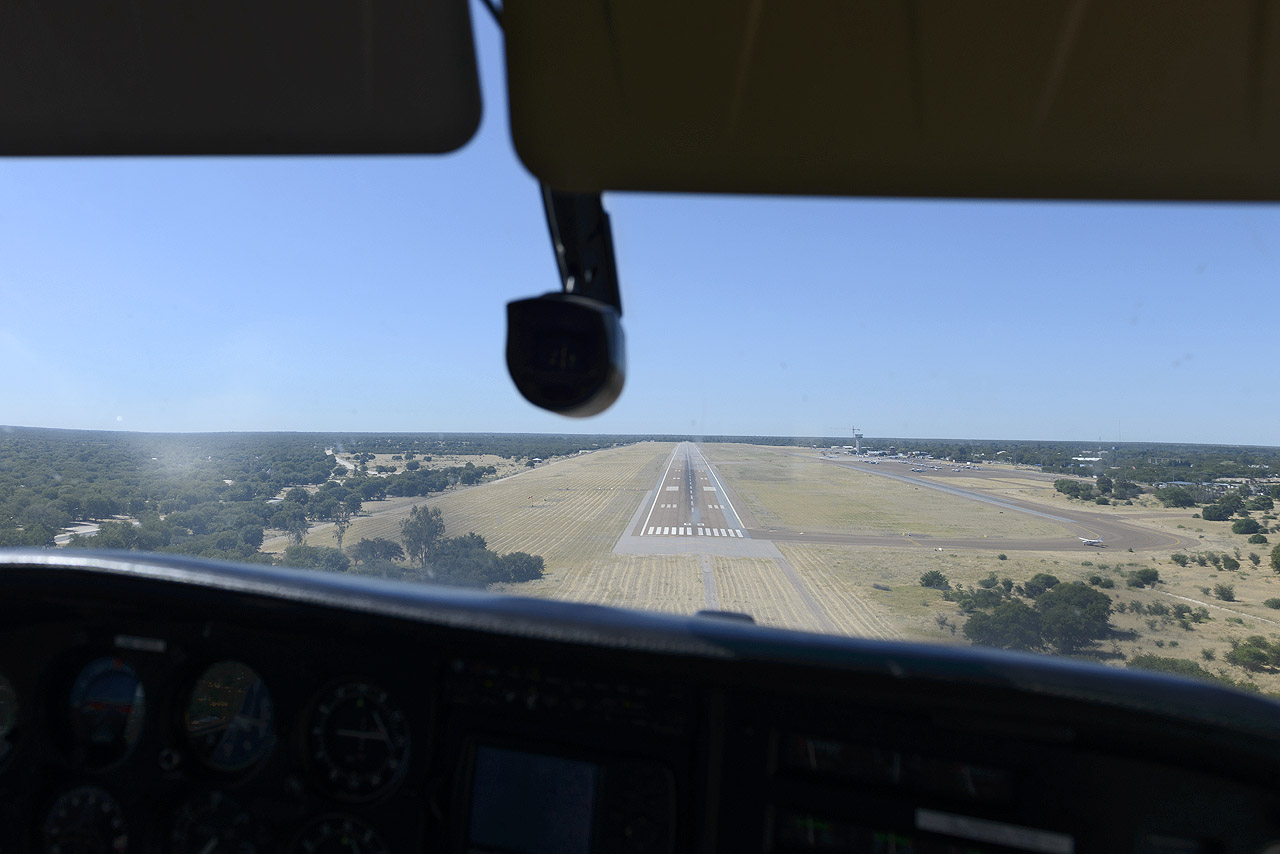
Basic Information
Individual journey. The journey will be planned on your preferred dates.
Duration 12 nights. Min 2 guests. Minimum age 6 years. Weight limit of luggage 20 kg. Luggage in one soft bag only.
Includes all transfers from Maun to the hotels/camps to Maun
- Tau Pan Camp: Standard Room. All meals, drinks (except premier brands), twice daily shared activities with one of the camp guides.
- San Camp: Standard Room. All meals, drinks (except premier brands), laundry service, twice daily shared activities with one of the camp guides.
- Kwetsani Camp: Standard Room. All meals, drinks (except premier brands), laundry service, twice daily shared activities with one of the camp guides.
- Savuti Camp: Standard Room. All meals, drinks (except premier brands), laundry service, twice daily shared activities with one of the camp guides.
Learn more about these areas











